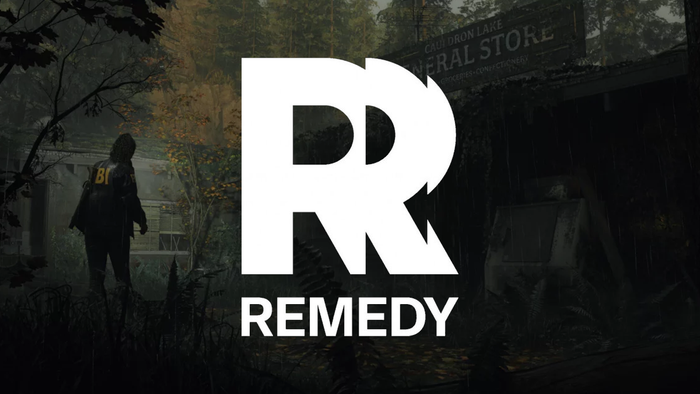
Featured Blog | This community-written post highlights the best of what the game industry has to offer. Read more like it on the Game Developer Blogs.
An Analysis of Dead by Daylight's Emblem System: Predicting the New Meta
In this article, I will be analyzing Dead by Daylight's Emblem system, a recently released scoring system which aims to redefine how players succeed in the game. In particular, I will be looking at how the rules will define the future meta of the game.

Introduction
As a long time player of Dead by Daylight and a full time indie developer, I have a long running interest in how players react to incentives and game mechanics. The recently implemented Emblem system gives me an opportunity to analyze the expected outcome of the game, both from a player and developer's perspective.
Disclaimer: As of the writing of this article, I have played two kiler games and about a dozen survivor games.
This article will reference heavily mechanics and concepts in Dead by Daylight. If you are already familiar with the game, you may go ahead and skip down to the Analysis section. For those who don't know, Dead by Daylight is a popular asymmetrical horror game, pitting a team of four survivors against a killer. The goal of the survivors is to repair 5 out of 7 generators scattered across the map while the killer's job is to down and place the survivors on various meat hooks also scattered across the map. Should a survivor be hooked 3 times, they will be sacrificed and removed from the game.
Survivors must attempt to evade the killer through skillful use of the environment, dropping pallets to stun or delay the killer, hiding behind line of sight blockers, or confusing the killer through clever maneuvers. Each of the killer in the game has his or her own unique ability, and both survivors and killers have a variety of perks which modify the core gameplay.
Analysis
The Emblem system puts forth a set of 4 goals for both survivors and killers. Here are the goals, taken straight from the Dead by Daylight Steam forums. Feel free to just skim through these, as I will bring up their significance in greater detail later.
SURVIVOR EMBLEMS
LIGHTBRINGER represents your participation in generator repairs. The higher the percentage of overall generator repair participation, the higher the quality of this emblem. Successfully cleansing Hex Totems and opening Exit Gates also grants points towards this emblem.
UNBROKEN represents your ability to survive. Escaping a trial without being downed results in an Iridescent quality, while being downed one or more times results in a Gold quality. If you die in a trial, the emblem quality is based on the amount of time you were alive, however, the highest quality you will receive in this manner is Silver.
BENEVOLENT represents how altruistic you and your team are during a Trial. The first two times each Survivor is hooked, all Survivors lose points. Safely unhooking them returns the points back to all Survivors that still remain in the match, and The Survivor performing the action also receives bonus points. An unsafe hook rescue results in a loss of points for The Survivor performing the action. Other altruistic actions, such as healing, making a Killer drop a Survivor, and taking a hit while a Survivor is being carried, also grant points.
EVADER represents your ability to stay hidden from The Killer or to be able to win chases against them. You win points by remaining unnoticed by The Killer; the closer you are, the higher the points. You also win points if you escape a chase without getting hit; the longer the chase, the higher the points. Every 15 seconds, you secure your points, however, you will only receive half of the points if you lose the chase.
KILLER EMBLEMS
GATEKEEPER is won by slowing down generator repair progress for as long as possible. You win points every second, based on the amount of incomplete generators remaining on the map. Ending the trial with incomplete generators also grants bonus points towards this emblem.
MALICIOUS represents your ability to apply pressure on Survivors and prevent them from helping each other. You win points by hurting, interrupting, and downing Survivors, and you lose points when they are healed. Points are also awarded each time a Survivor is hooked, which are NOT lost when The Survivor is unhooked.
DEVOUT represents your ability to sacrifice and kill. Each Survivor eliminated from the trial grants points. Sacrifices, moris and Reverse Beartrap kills grant the same amount of points. No points are awarded for Survivors that bleed out.
CHASER represents your ability to find and chase Survivors. You win a few points each time you find a Survivor, and you also win points by winning the chase; the shorter the chase, the higher the points.
Two of the survivor emblems, Lightbringer and Unbroken, are directly tied to the primary goal of the survivors: repair generators and escape. Meanwhile, Evader and Benevolent are secondary goals, tasks which are relegated based on the game condition.
For the killer emblems, Devout strictly adheres to the original namesake goal of the killer. Gatekeeper and Malicious are both focused towards delaying survivor progress. Chaser is a passive goal which occurs mostly as the killer is playing.
Furthermore, "pipping" or ranking up is entirely dependent on how well players perform in each emblem category. Taking again from the Dead by Daylight Steam forum:
Based on what you did during the trial, you will receive one of the following Quality for your emblems:
None (you didn’t get the Emblem!)
Bronze
Silver
Gold
Iridescent
Each of these quality grants an amount of points, going from 1 to 4. The total sum of points you obtained from emblems dictates how many pips you win or lose:
Between 0 and 5 points: you lose 1 pip
Between 6 and 8 points: no change
Between 9 and 13 points: you gain 1 pip
Between 14 and 16 points: you gain 2 pips
So right away, we note that in order to pip, a player must realistically perform well in at least 2 categories. With the exception of Lightbringer, survivors earn points towards their emblem entirely by their reaction to a killer, chiefly by their ability to avoid being killed by the survivor and by their abiltiy to rescue survivors.
This then leaves us with the killer emblems, of which only one, Devout, is centered specifically around survivors being killed. Here, we note that time is the most important element. For Gatekeeper, killers must ward off survivors to keep the generators unpowered for as long as possible. Chaser and Malicious are also dependent on length of play, as more time equate to more opportunities to achieve these goals: mainly finding a survivor and hitting them.
The Meta
Since the survivors' emblem goals are mainly centered around the killer's action and the killer benefits from extending the gameplay, it is in the best interest of the killer to choose a set of three generators to protect. For those familiar with Dead by Daylight, this is the "three gennies" strategy. By routinely patrolling three closely positioned generators, the killer can prevent the survivors from escaping, while scoring in 3 out of 4 categories, by spotting survivors working on generators (Chaser) and interrupting /hitting any survivors working on generators (Malicious). Given sufficient time, a killer will be able to pip while getting as little as one or no kills.
Conclusion
Previously, rank was closely associated with the ability of survivors to survive and killers' ability to hook and kill survivors. By naturally playing the game, skilled players would naturally rank up. An important distinction to make is that there is currently little benefit to pipping or ranking up. Most pipping was done by association, rather than an intended effort.
The introduction of season rewards (as hinted by the developers) would make a drastic change in players' incentives. If pipping would grant unique rewards, then players would be incentivize to play in the most efficient manner, which in turn would result in killers employing the "three gennies" strategy. For now, there should be little concern about rising toxicity from pressure to pip.
Killers that would benefit greatly the emblem system would any that can effectively guard three generators efficiently. This would be a reversal of fortune for several killers, including Freddy and the Hag, both killers who were nominally bad at chasing but have abilities that can prolong or defend generators from being repaired. The high skill cap and high mobility Nurse and Hillbilly would probably remain as the top killers.
Builds that depend on the exit gates being powered are less likely to be effective, as keeping the generators unpowered remains a heavy priority for the killer. Meanwhile builds that focus on slowing generator progress such as those that include the perks: Overcharge or Unnerving Presence would benefit greatly.
Is this ultimately a good thing?
Nominally, the Emblem system seeks to increase the length of play, encouraging more "cat and mouse" chase sequences, whist making previously less competitive killers more viable. The dominance of the "three gennies" strategy, should it become the games' meta, would ultimately produce a negative outcome in the gameplay.
It is by the variation of strategies that keeps the gameplay fresh. One of the greatest flaw of Dead by Daylight has always been the prevalence of dominant strategies, which drowns out alternative playstyles. The introduction of the Emblem system seeks to solve this issue, but its implementation runs the risk of overriding the current existing strategies in favor of the "three gennies" strategy.
Read more about:
Featured BlogsAbout the Author(s)
You May Also Like













